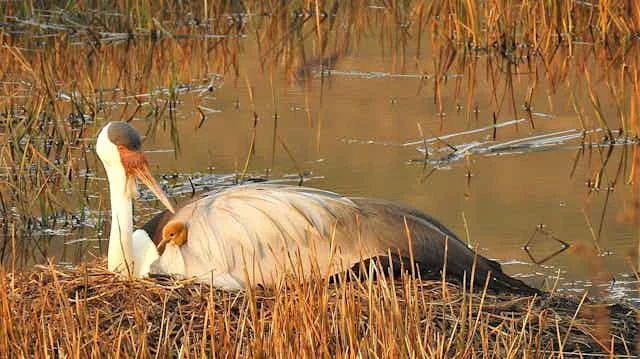
Wattled Cranes in South Africa: From Critically Endangered to A New Hope
Cranes are some of the world’s most majestic birds, with 15 species found globally. Among these, the wattled crane in South Africa was once on the brink of extinction. However, recent efforts have seen a remarkable turnaround, as their numbers have increased from just 188 birds in 2000 to 304 today. This resurgence is significant, leading to the species being moved from Critically Endangered to Endangered on the International Union for the Conservation of Nature’s list of threatened species.

What sets wattled cranes apart is their impressive size and striking colors. They are the largest crane species in Africa, standing up to six feet tall, with a wingspan reaching 8.5 feet. These birds not only symbolize grace and beauty but also reflect the health of their environment. They thrive in wetlands and grasslands, which play a vital role in supporting both wildlife and local human communities.
The rebound in their population can be attributed to increased breeding areas, rising from just 70 in 1999 to 84 today in KwaZulu-Natal. The consistent efforts by organizations like the Endangered Wildlife Trust and the International Crane Foundation in conjunction with landowners are crucial. Rehabilitation of habitats has been essential for their recovery, especially since wetlands are critical to their breeding and foraging needs.

Annual aerial surveys are conducted to accurately count and monitor the cranes. The data collected shows a steady increase in the bird population, with growing awareness around the importance of wetlands. These ecosystems are not only essential for the cranes but also protect human communities from flooding and provide clean water.
While there is cause for hope, the wattled crane remains vulnerable, with fewer than 400 birds in KwaZulu-Natal making them susceptible to disease and habitat loss. Hence, conservationists continue to advocate for the restoration of wetlands across South Africa. More breeding sites are crucial for sustaining and increasing their populations.

The wattled crane’s recovery is a testament to the impact of dedicated conservation efforts and the intricate relationship between birds, humans, and the wetlands they inhabit. As these efforts continue, there is optimism for a sustainable future for this majestic species. Could we see a world where wattled cranes are no longer endangered? We invite you to share your thoughts and engage in this important conservation dialogue.